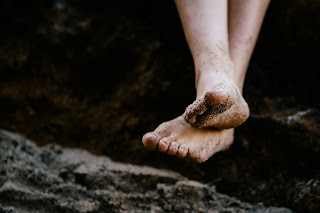Nail Fungus, Revealing The Culprits: What Causes, Cures and Prevents Nail Fungus
Nail fungus, also known as onychomycosis, is a common infection that affects the nails—both fingernails and toenails. It begins innocuously as a small white or yellow-brown spot under the tip of the nail. However, if left untreated, it can progress, leading to discoloration, thickening, and even crumbling of the nail edges. In this comprehensive article, we’ll delve into the causes, symptoms, prevention, and effective treatments for nail fungus.
Are your nails discolored, thickened, or crumbly? You might be battling an annoying and surprisingly common foe: nail fungus. This stubborn infection, also known as onychomycosis, can make your nails look less than their best and can even cause them discomfort.
But fear not! Understanding nail fungus is the first step to defeating it and reclaiming healthy, beautiful nails. Let's delve into the causes, symptoms, treatment options, and, most importantly, prevention tips to ensure your nails stay strong and clear.
The Sneaky Culprits: What Causes Nail Fungus?
- Fungi Among Us: Nail fungus is primarily caused by dermatophyte fungi, although molds and yeast can also be responsible. These fungi thrive in warm, moist environments, making our nails an ideal breeding ground.
- Yeasts and Molds: While less common, certain yeasts and molds can also find a cozy home in your nails, causing fungal infections.
- Weak Defenses: Our bodies have natural defenses against invaders, but certain factors can increase your vulnerability to nail fungus:
- Age: As we get older, our nails become drier and more brittle, creating entryways for fungus.
- Circulation Issues: Conditions like diabetes that impede blood flow to your extremities can weaken your defenses.
- Weakened Immunity: If your immune system is compromised, fighting off a fungal infection becomes harder.
- Nail Trauma: Tiny injuries to the nail make it easier for those pesky fungi to get in.
Where Nail Fungus Lurks
Think public pools, nail salons, and gym locker rooms are danger zones? You're right! Nail fungus thrives in these places. Additionally:
- Sweaty Shoes: Your feet create a perfect breeding ground for fungus - warm, dark, and moist.
- Shared Personal Items: Using someone else's nail clippers or towels can spread fungal spores.
- Family History: Some people may be genetically predisposed to fungal infections.
Telltale Signs of Trouble: The Symptoms
Nail fungus doesn't announce itself with a marching band. Keep an eye out for these subtle (and not-so-subtle) clues:- Discoloration: Yellowish, brownish, or even white patches on your nails.
- Thickening and Brittleness: Nails may become thick or oddly shaped, making them prone to crumbling.
- Debris Build-Up: Whitish debris can collect under your nails.
- Unpleasant Odor: A slightly foul smell can sometimes accompany a fungal infection.
- Discomfort: In advanced cases, nail fungus can cause pain or discomfort when wearing shoes.
Seeking Expert Help: When to See a Doctor
Don't let nail fungus take over! Consult a doctor or podiatrist if:
- Self-care isn't helping: Over-the-counter treatments aren't always enough, don't give up!
- Pain or Discomfort: Don't dismiss worsening pain.
- Underlying Conditions: If you have diabetes or other health conditions, a doctor's guidance is essential.
Vanquishing the Fungus: Treatment Options
- Oral Antifungals: Prescription medications taken by mouth can be highly effective, especially for tougher infections.
- Topical Antifungals: Specialized creams, lacquers, or solutions applied directly to the infected nail.
- Laser Therapy: Emerging laser treatments show promise in eliminating nail fungus.
- Natural Remedies: Tea tree oil and other natural treatments might offer some benefit, but are often less effective than medical options.
Prevention Tactics: Keep Nail Fungus at Bay
- Hygiene is Key: Wash your hands and feet regularly, and dry thoroughly, especially between toes.
- Breathable Footwear: Choose shoes that let your feet breathe, and change socks if they get damp.
- Pedicure Precautions: Opt for reputable nail salons with strict sanitation practices. Bring your own tools if you're concerned.
- Protect Your Nails: Wear gloves when doing chores that expose your hands to harsh chemicals or moisture.
- Boost Your Immunity: Support your body's natural defenses with a healthy diet, exercise, and stress management.
Remember: Patience is Essential
Nail fungus is a common ailment, but with proper care and timely treatment, you can maintain healthy nails. Remember, prevention is key, so keep those feet dry and your shoes fresh. Let your nails be a testament to your overall well-being! 🌟
Remember, this article is not a substitute for professional medical advice.
Reminder: Nail fungus treatment can take time; nails grow very slowly! Stay consistent with your treatment plan, and eventually, healthy, clear nails will replace the infected ones.
Reclaim Your Beautiful Nails! Don't let nail fungus ruin your confidence. With knowledge, proactive measures, and appropriate treatment when needed, you can defeat this pesky intruder and enjoy healthy, strong, and beautiful nails once again!
Remember, this article is not a substitute for professional medical advice. In the event you are encountering some real issues please consult a physician for proper medical treatment.







Comments
Post a Comment
Hi, I am glad you took time to stop by, and read or just look through my blog. It is my sincere hope that the information provided is beneficial. I am delighted to hear from, your comments are always welcome. Have a very nice and blessed day!